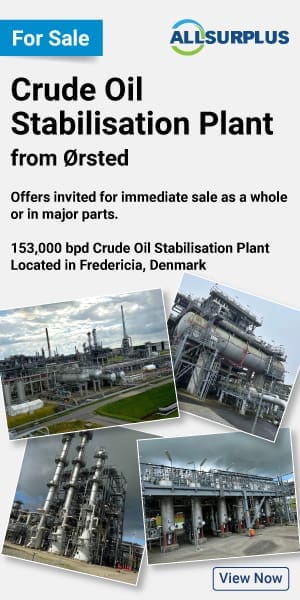Factory audits are instrumental in underpinning the operational integrity and regulatory compliance of the oil and gas industry. These systematic reviews assess various facets of production facilities—from safety protocols to environmental impact—ensuring that operations align with both legal standards and industry best practices. The necessity for factory audits stretches beyond simple compliance; they are critical in maintaining the efficiency and reliability of operations that affect global energy supply chains.
Why Are Factory Audits Critical for Oil and Gas Sector Success?
The oil and gas sector, known for its complex regulatory environment and high-stakes operations, relies heavily on factory inspection services to maintain its credibility and operational safety. These audits provide a framework for continuous improvement, helping to identify potential risks and inefficiencies that could undermine sector operations. Key benefits include enhancing operational resilience, safeguarding worker safety, and protecting the environment while ensuring compliance with international standards and regulations.
What Constitutes a Factory Audit in the Oil and Gas Industry?
A factory audit in the oil and gas industry involves a comprehensive examination of the processes and systems at a facility to ensure they meet required standards and best practices. This process typically includes several key components:
- Pre-Audit Preparation: Gathering necessary documentation and creating an audit plan.
- On-Site Evaluation Procedures: Conducting thorough inspections and assessments of operational processes.
- Post-Audit Activities: Compiling findings and creating actionable recommendations.
Pre-Audit Preparation
Effective factory audits begin long before the actual on-site evaluation. Pre-audit preparations involve extensive planning and coordination. Auditors must collect and review relevant documentation, such as previous audit reports, regulatory compliance records, and operational manuals. This stage sets the groundwork for a focused and efficient audit, highlighting areas that require special attention.
On-Site Evaluation Procedures
During the on-site evaluation, auditors engage directly with the operational processes. They employ a variety of methodologies, from direct observation to staff interviews and the review of process logs. This hands-on approach allows auditors to gain a real-time understanding of operational workflows and identify any deviations from established protocols.
Post-Audit Activities
After completing the on-site assessments, auditors move into the post-audit phase. This stage involves detailed report writing, where findings are documented and prioritized based on their impact on safety, compliance, and efficiency. The final report includes recommendations for improvement, setting the stage for ongoing enhancements to operations.
How Do Factory Audits Enhance Safety and Compliance?
Factory audits are critical in reinforcing safety and compliance within the oil and gas sector. By systematically identifying and addressing potential hazards, these audits help prevent accidents and ensure compliance with safety standards. Key areas of focus during these audits include:
- Equipment Maintenance and Safety Checks: Regular inspections to ensure all machinery is operating correctly and safely.
- Regulatory Compliance: Verification that operations comply with both national and international environmental and safety regulations.
- Emergency Response Procedures: Assessment of the effectiveness of emergency protocols and training drills.
Incorporating these elements into regular audit processes helps maintain high safety standards and regulatory compliance, crucial for the sector’s long-term success.
Assessing Environmental Impact Through Factory Audits
Environmental stewardship is a critical concern in the oil and gas industry, given its potential impact on ecosystems. Factory audits play a pivotal role in monitoring and mitigating environmental risks associated with extraction and processing operations. These audits assess compliance with environmental standards and protocols, focusing on:
- Emission Controls: Ensuring that facilities operate within the permissible limits for emissions.
- Waste Management: Evaluating the effectiveness of waste disposal systems to prevent environmental contamination.
- Resource Conservation: Assessing the efficiency of resource use, including energy and water, to minimize environmental footprints.
The Impact of Factory Audits on Operational Efficiency
Factory audits not only safeguard compliance and safety but also serve as catalysts for enhancing operational efficiency within the oil and gas sector. These audits pinpoint inefficiencies in the oil and gas production process and suggest improvements that can lead to significant cost savings and performance enhancements. Areas typically scrutinized include:
- Process Optimization: Identifying redundancies and bottlenecks in the production lines that can be streamlined.
- Resource Allocation: Ensuring optimal use of resources, which reduces waste and increases production efficiency.
- Technology Integration: Evaluating the use of technology in automating and enhancing operational processes.
Case Studies of Improved Efficiency Through Audits
Several case studies highlight the role of factory audits in improving operational efficiencies. For example, an audit conducted at a refinery identified opportunities for automating certain manual valve operations, which reduced the risk of human error and increased throughput. Another case involved optimizing the supply chain logistics for an offshore drilling operation, which significantly cut down on idle time and reduced fuel consumption.
Integrating Technology in Factory Audits for the Oil and Gas Sector
The integration of advanced technologies such as artificial intelligence (AI) and the Internet of Things (IoT) has revolutionized the approach to factory audits in the oil and gas industry. These technologies enhance the accuracy and efficiency of audits by providing real-time data and predictive analytics.
Digital Tools and Software for Audits
Incorporating digital tools into the auditing process can significantly enhance the effectiveness of factory audits. Some of the modern tools used include:
- AI-powered Analytics: For predictive maintenance and anomaly detection.
- IoT Sensors: To monitor equipment performance and environmental conditions in real time.
- Blockchain Technology: For enhancing the transparency and traceability of audit trails.
These technological advancements not only streamline the auditing process but also provide deeper insights into operational dynamics, enabling more targeted and effective improvements.
Challenges and Solutions in Factory Audits
Despite their benefits, factory audits can present challenges, particularly in complex environments like the oil and gas sector. Common issues include:
- Data Overload: Managing and analyzing the vast amount of data collected during audits.
- Resistance to Change: Encountering organizational inertia and resistance to implementing recommended changes.
- Logistical Complexities: Coordinating audits across geographically dispersed and remote locations.
Solutions to Overcome Audit Challenges
To address these challenges, the following strategies can be employed:
- Data Management Tools: Utilize advanced data analytics software to efficiently process and analyze audit data.
- Change Management Programs: Develop comprehensive change management strategies to encourage organizational buy-in.
- Remote Auditing Techniques: Employ remote monitoring technologies to conduct audits in inaccessible locations.
Best Practices for Conducting Effective Factory Audits
Conducting effective factory audits involves a structured approach and adherence to best practices, such as:
Preparing for an Audit
- Comprehensive Audit Checklist: Develop a detailed checklist tailored to specific operational aspects of the oil and gas industry.
- Stakeholder Engagement: Ensure all relevant stakeholders are informed and engaged throughout the audit process.
During the Audit
- Thorough Documentation: Document all findings meticulously to ensure that no details are overlooked.
- Transparent Communication: Maintain clear and open communication with the auditee to foster a cooperative audit environment.
Post-Audit Follow-up
- Actionable Recommendations: Provide clear, actionable recommendations based on audit findings.
- Follow-up Reviews: Schedule follow-up audits to ensure that recommendations are implemented effectively.
Future Trends in Factory Audits in the Oil and Gas Industry
The future of factory audits in the oil and gas sector is likely to be shaped by further technological integration and a greater focus on sustainability. Trends to watch include:
- Sustainability Audits: Increased focus on auditing for sustainability to ensure environmental and social governance (ESG) compliance.
- Automated Audits: More widespread use of automation and AI to conduct audits with higher precision and less human intervention.
Conclusion
Factory audits are indispensable for ensuring the success and sustainability of the oil and gas sector. By fostering compliance, safety, and efficiency, these audits not only support operational integrity but also contribute to the sector’s long-term viability and public trust. As technology evolves, factory audits will continue to adapt, becoming more integrated and efficient, thereby playing an even more critical role in the industry’s future.





